In this article I have explained the main types of solar panels available in the market, and also discuss the different types solar inverters which are specifically compatible with these solar panels. Further in the article we will also discuss how the efficiency of a solar panel may be affected due to to bad weather, and how that may result in low power output from the solar panel.
Introduction
Solar power generation is not new. It was accidentally discovered by Bell Telephone Lab in the early 1950s.
Solar power generation technology has advanced tremendously for the past 50 years but people are not being made aware of these advancements.
For example; the efficiency of solar power has gone up after the introduction of microinverters and power optimizers that convert the direct current (DC generated by solar panels) into Alternating Current (AC) at the generating point.
This reduces the power losses of low voltage DC that usually run through hundreds and thousands of meters of wiring within a household or a multistory building.
Solar power generation can be done by every household, industry, and office.
Solar panels also come in different and more efficient configurations. There is another age-old technology of inverters called string inverters.
Solar power is produced by photovoltaic cells. Today’s most commonly used solar panels are made of crystalline silicon. Silicon is found in every electronic gadget, computers, smartphones, TVs, etc.
These panels can be used to generate sufficient power for household, heat water by the solar water heater, and offer solar home heating and cooling.
Types of Solar Panel
There are four most popular types of solar panels available for installation. Some of them are preferred by households living in cold areas with gable roofs.
There are broadly 4 kinds of solar panels available as I have explained below. The modern advanced technologies employ solar inks, dyes, mirrors, and plastics.
Solar Roof Shingles
Solar roof shingles is the new technology in solar panel options. Each solar shingle panel can generate 13 to 67 watts of energy. These are shingle shaped relatively smaller solar panels spread out and installed over the already built gable roofs. It is the growing trend of installing solar roof shingles.

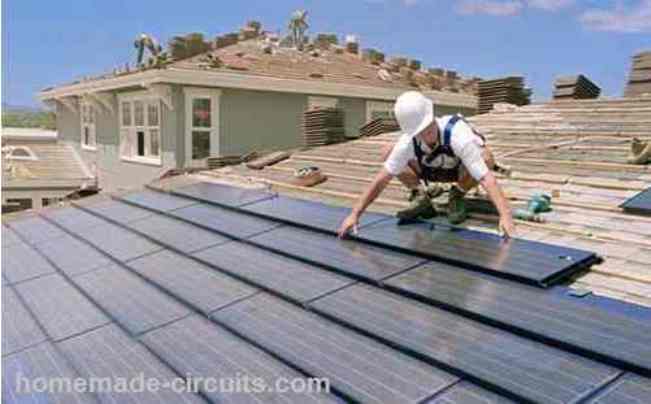
They look beautiful and mimic architectural asphalt shingle roofs. But they offer huge benefits because they can be easily installed even in smaller cutout spaces of the roof to provide sufficient solar energy for the house.
Solar shingles are as durable as regular asphalt shingles but people prefer to install any kind of solar panels over an already built-up roof. However, they are durable and strong enough to withstand all weather conditions. Solar shingles are more costly than regular solar panels.
Thin Film Solar Panels
The process of manufacturing thin film solar panels is to cover a substrate of glass, plastic or metal with one or more thin-layers of photovoltaic material. These solar films are flexible and light weight. The thin film solar panels degrade somewhat faster than mono and polycrystalline solar panels.
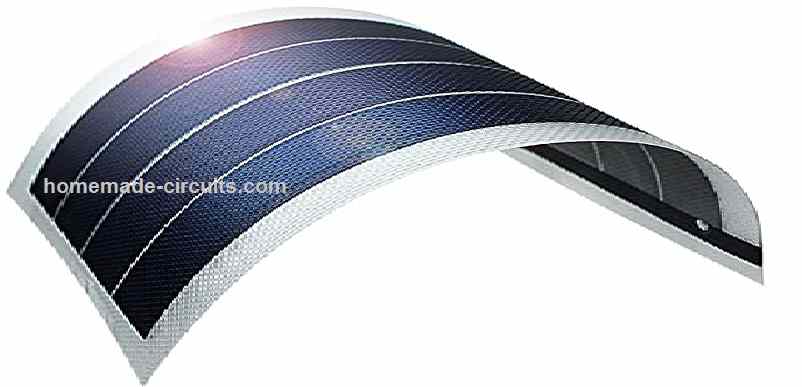
Considering that the production of thin solar film panels is less complex, hence their price is also reasonable. Their output is 5% less than monocrystalline panel efficiency. Normally, thin film cells deliver between 15-22% solar panel efficiency.
Thin film solar panel technology is gaining popularity as compared to more expensive types of solar panels, therefore thin film solar panels are installed on large scale projects and in record breaking solar power plants. Thin film solar panels have relatively a shorter lifespan. They also come with less warranty.
Polycrystalline Solar Panels
Polycrystalline or multi-crystalline solar panels is a type of solar panel which are made up of crystalline cells. They are usually rectangular shaped panels often seen installed on flat rooftops, gable roofs, industrial sheds and in open spaces. A typical polycrystalline solar panel mostly used by homeowners contains up to 40 solar cells.
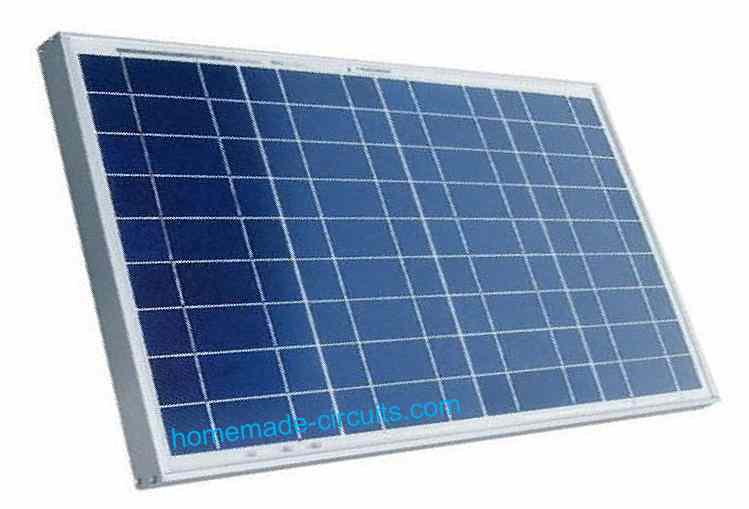
The silicon is not grown as a single cell but as a block of crystals. These blocks are then sliced to form thin wafers and create individual solar cells. The current delivery of polycrystalline solar panel efficiency stands at 15-22%. A polycrystalline solar panel is square cut and blue speckled color.
These are economical because of the process of manufacturing. This is the reason why most people buy polycrystalline panels. They are less heat tolerant which is the reason of the low efficiency. They are particularly suitable for installation with high sun number score or in the areas with maximum sun days.
Monocrystalline Solar Panels
Monocrystalline solar panels or single-crystalline cells are manufactured from the purest silicon. Monocrystalline solar cells are cut from a single big crystal of silicon.
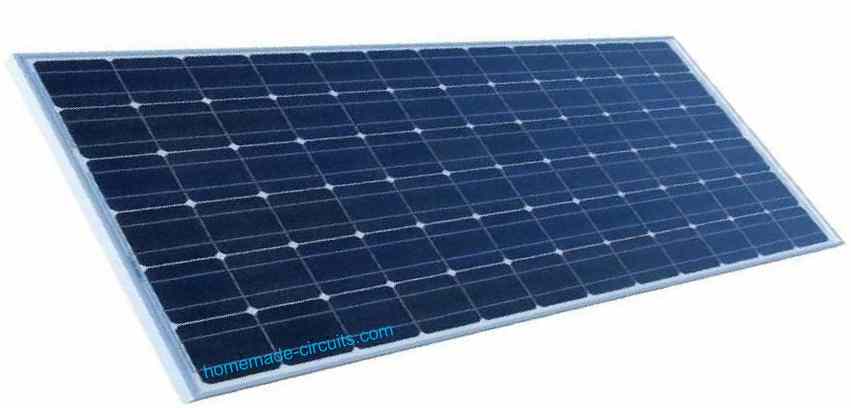
A crystal of this type of silicon is a complex process. The rod is cut into wafers to make the solar cells. Monocrystalline solar panels have the highest efficiency as compared to the other types of solar cells. The efficiency of current delivery of monocrystalline solar panel stands at 22-27%.
Monocrystalline solar panel cells are more suitable for the places with a varying weather conditions like prolonged winter months. Their efficiency is superior as compared to polycrystalline panels because they are heat tolerant and cylindrical shaped. Monocrystalline panels are made of pure silicon. Their colors are dark and somewhat uniform.
Monocrystalline cells cost more than polycrystalline panels but they are proving to be more economical in the long run because of their long life, more warranty and low mean time before failure (MTBF).
Solar power inverters
All the solar panels essentially generate direct current (DC).
However, most of our household gadgets like lightbulbs, TVs, refrigerators, heaters, ACs, etc use alternating current (AC) Even our laptops and mobile are charged using alternating current.
Considering that the DC produced by solar panels has to be inverted into an AC for use at home or office, there are specific invertors used for this purpose.
Many households and offices with power shutdown issues, use a power backup system comprising of a lead acid battery pack and power inverter that converts battery power (DC) into AC. One has to be careful while choosing an inverter for the power generated by solar panels.
Most household inverters are less efficient and produce a square or stepped wave output instead of sinewave. This is harmful for most of the gadgets.
One can understand the effect of a square wave output by the humming sound of a motor or a fan while they are running on an inverter during a power breakdown. Offices, Banks, industries mostly use online sophisticated uninterruptible power system (Online UPS).
These UPSs are designed for pure sinewave output without any interruption of even a microsecond. There are options to use commonly produced power inverters with solar power panels.
Household inverters use power storage batteries for a limited time power backup and recharge these batteries when the main power is available.
Solar power generation technology has done a slow but a reasonable job of development of power inverters suitable for solar power.
These types of solar inverters can broadly be categorized into 3 segments:
String inverters
The panels are arranged in strings connected parallel to each other and then tied to the inverter.
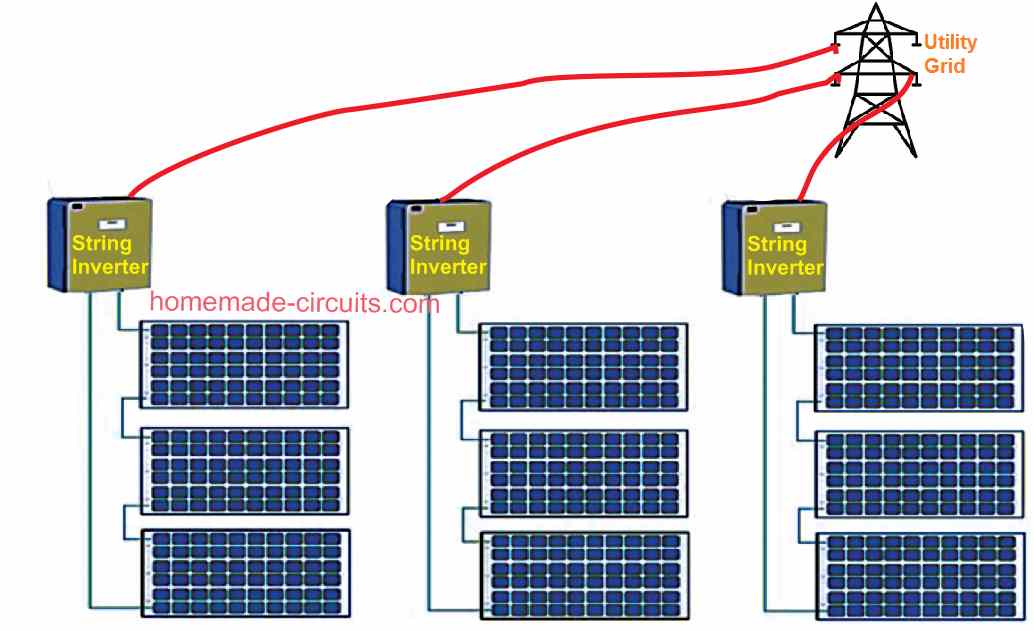
Microinverters
Microinverter is a type of inverter which converts power from DC to AC within each panel. Microinverters offer high energy-efficiency but at a high investment. These panels don’t block energy flow from a solar conversion occurring within a panel on a sunny and shady portion. They operate autonomously.
Power optimizers
Quite like microinverters, you will find solar panels that are embedded with power optimizers.
They are much suitable for the roofs that partially remain shaded. When power flows out from the power optimizer cell, it goes through a processing stage, which leads to higher efficiencies for the cells.
This is why they are called power optimizers. The best thing about power optimizers is that they cost less than microinverters.
Effect of weather on solar power generation
All kinds of solar panels perform to their maximum efficiency under the ideal weather conditions.
1, Snow can reduce efficiency by 100% if the solar panels are covered by more than 5 cm thick layer of snow. Snow also adds weight to a roof as well as the installed solar panels. Roofs are generally made of wood, slates, tin or aluminum sheets.
The angle of the roofs allows snow to glide off. In case of wooden roofs there is need for manual snow clearance to reduce the weight of the snow. Normally, even when the weather is snowy, solar panels can still operate with relative efficiency and generate power.
Comparing Efficiency of Solar Panels
Monocrystalline photo Voltic cells are not necessarily rounded. But these are more efficient than all other solar cells.
| Panel type | Cell Shape | Power min | Power max | Efficiency % | Temp coef C |
| Mono | Near Square | 275 | 295 | 17.0-18.0 | -0.400 |
| Monocrystalline | Rounded | 245 | 265 | 15.0-16.2 | -0.410 |
| Polycrystalline | Square | 260 | 280 | 15.9-17.1 | -0.420 |
2. Wind is one of the reasons of solar cell damage. The manufacturers have to conduct extensive wind tunnel testing to decrease potential damage. According to the research the effect of wind cools down the panels. The effect of cooling by 1 degree, enhances the efficiency by 0.05%.
3. Hail does not have much of damaging effect on solar panels. Solar panels can sustain hail hitting at a speed of 20 to 30 m/s. Solar panels are designed to withstand such extreme weather conditions.
4. Ice builds-up on the surface of solar cells. It is recommended that the solar cells should have a silicon coating applied to avoid ice formation. If ice builds up on solar panels it can practically dent the efficiency of the solar panel by 25 to 100%.
5. Chemical Residue solar cells do get covered by chemical residues. These residues can get dissolved with min 20 mm of rainfall. There is no significant reduction in efficiency. Studies have shown reduction of 0.2% efficiency due to chemical residues on solar cells.
6. UV Degradation All the solar cells are laminated. The laminated structure can get effected by UV rays of the sun. UV rays also cause discoloration of solar cells. The exposure to the sunlight can form a layer of boron oxide that reduces efficiency by 1 - 3% in the first 1,000 hours.
7. Damp heat is necessary o check the durability of solar panels in installed in humid conditions. Humidity causes corrosion and an overall decrease of solar panel efficiency.
8. Insulation Resistance is to check material strength and current leakages.
9. Thermal Cycling can be the reason for failure of solar panel components including solar cells, interconnections, and module connections.
Conclusion:
There is no doubt that solar power is a better renewable energy that is environment friendly but it’s important to understand the geography of the place of installation, roofing system, weather conditions, sunlight days and also consider that solar panels have maximum efficiency of 27% under the ideal testing conditions. All the factors that could influence solar panel efficiency must be taken into consideration.
hi there,
Have you designed a small microinverter circuit that can be used with <300watt 30v panels? I guess one problem that exists with microinverters that is not a problem with DC systems, is synchronization. How are all the inverters kept in phase with one another?
Thanks
Doug
Sorry, no I haven’t worked with a microinvreter design so far.
When employing microinverters in a solar energy system, you are right that synchronisation is critical. Each panel in a microinverter system has its own inverter, which implies that hundreds or even thousands of inverters can operate at the same time.
Microinverter systems employ a method known as frequency-shift keying (FSK) to guarantee that all of the inverters are in sync with one another. FSK is a digital modulation method for encoding data on a carrier wave. FSK is used in microinverters to encode the frequency and phase information of the AC waveform.
Each microinverter has a unique frequency and phase code that is programmed into it during manufacturing. When the inverter is connected to the grid, it listens for the grid frequency and phase and then synchronizes itself to match.
With FSK, microinverter systems are able to attain high levels of synchronization across the inverters, regardless of how many of them are operating simultaneously. This ensures that the output of the system is consistent and high-quality, even under varying operating conditions.
I have solar panels on the front and back of my house and the back gets the most sunlight. I am interested in how to enhance solar production on the front. I was thinking of a mirror system to redirect some of the sun from the back to the front to enhance production for front solar panels. Any ideas would be helpful
The best method would be to create a mechanical set up that would elevate the panels to face the sunlight directly. If that’s not possible then perhaps using mirrors seems to be the next best option.